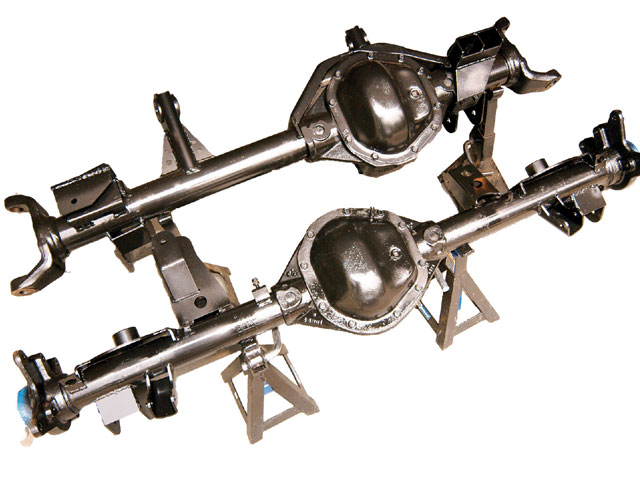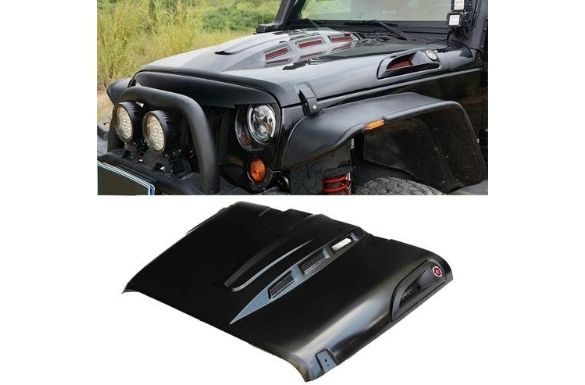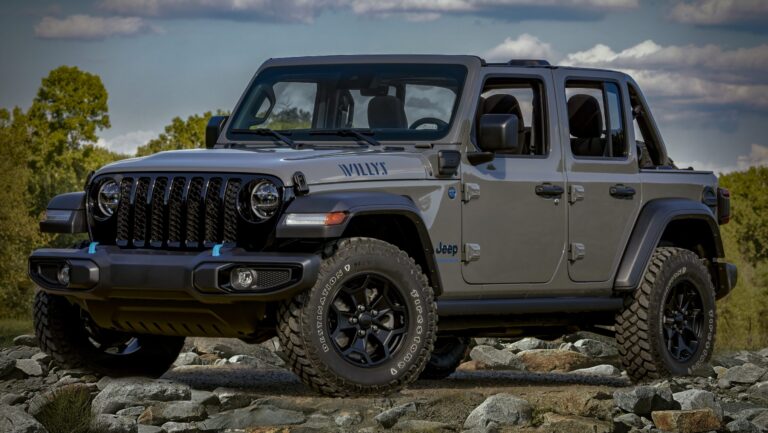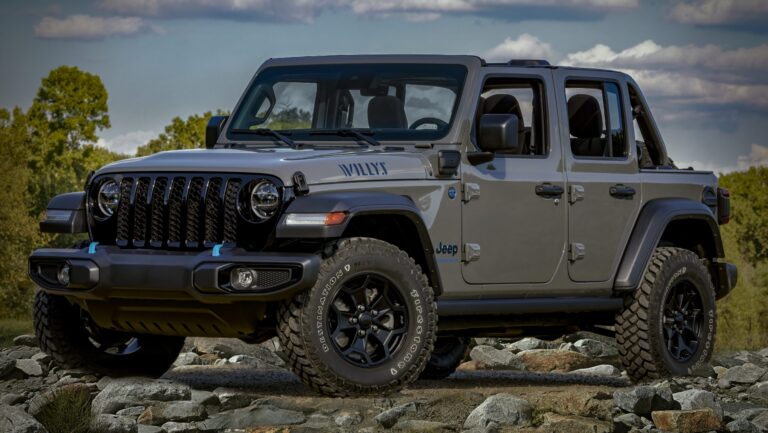Used Dana 44 Jeep Axles For Sale: Your Comprehensive Guide to Upgrading Your Off-Road Beast
Used Dana 44 Jeep Axles For Sale: Your Comprehensive Guide to Upgrading Your Off-Road Beast jeeps.truckstrend.com
For any serious Jeep enthusiast, the term "Dana 44" conjures images of rugged durability, enhanced capability, and the confidence to tackle the toughest trails. Long renowned as a significant upgrade over stock axles found in many Jeeps, the Dana 44 offers a substantial increase in strength, allowing for larger tires, more aggressive off-roading, and greater peace of mind. While brand new custom axles can cost a fortune, the vibrant market for used Dana 44 Jeep axles for sale presents an incredibly attractive and cost-effective alternative for those looking to beef up their rig.
This comprehensive guide will delve into everything you need to know about finding, evaluating, and purchasing a used Dana 44 axle for your Jeep. Whether you’re replacing a damaged axle, upgrading from a weaker Dana 30 or Chrysler 8.25, or embarking on a full custom build, understanding the nuances of the used axle market is crucial for making a smart investment.
Used Dana 44 Jeep Axles For Sale: Your Comprehensive Guide to Upgrading Your Off-Road Beast
Why Choose a Used Dana 44 for Your Jeep?
The allure of the Dana 44 for Jeep owners is multifaceted, extending beyond just raw strength. Here’s why it remains a top choice for upgrades:
- Superior Strength and Durability: Compared to lighter-duty axles like the Dana 30 (common in front of TJs, XJs, and JKs) or the Chrysler 8.25 (found in some XJ and TJ rears), the Dana 44 features a larger ring and pinion, stronger housing, and often larger axle shafts. This translates directly to increased resistance against bending, breaking, and general wear and tear, especially under the stress of larger tires and aggressive off-road driving.
- Versatility and Wide Application: Dana 44 axles were used in a vast array of vehicles, including various Jeep models, which means there’s a broad spectrum of widths, bolt patterns, and configurations available. This makes them highly adaptable for swaps into different Jeep platforms, from CJs and YJs to TJs, LJs, JKs, and even custom buggy builds.
- Abundant Aftermarket Support: The Dana 44 has an enormous aftermarket. This means virtually any component you could ever need – from stronger axle shafts, locker options (ARB, Detroit, Eaton), and a vast range of gear ratios to heavy-duty differential covers and truss kits – is readily available. This makes future upgrades, repairs, and customization simple and cost-effective.
- Cost-Effectiveness: A brand-new, built-to-order Dana 44 axle can easily run into thousands of dollars. Used Dana 44s, on the other hand, offer significant savings, allowing enthusiasts to achieve a substantial performance upgrade without breaking the bank. The money saved can then be allocated to other critical components like tires, suspension, or recovery gear.
- Proven Performance: The Dana 44 has a long and storied history in the off-road world. It’s a tried-and-true component that has proven its mettle in countless challenging environments, earning its reputation as a reliable workhorse.

Identifying Different Dana 44 Variants for Jeeps
Not all Dana 44s are created equal. Understanding the differences is paramount to selecting the correct axle for your specific Jeep and intended use. Key distinctions include:
- Front vs. Rear: Dana 44s are available for both front and rear applications. Front axles will have steering knuckles, ball joints, and provisions for unit bearings or wheel hubs. Rear axles are typically simpler, with just axle tubes and a differential.
- High Pinion (HP) vs. Low Pinion (LP):
- High Pinion (HP): The pinion gear sits above the centerline of the ring gear. This configuration is generally stronger for front axles under forward load (driving forward) because the gear mesh is on the drive side of the teeth. It also provides better driveshaft clearance. Common in TJ/LJ/JK Rubicon front axles.
- Low Pinion (LP): The pinion gear sits below the centerline of the ring gear. This is common in most rear Dana 44s and some older front axles. While strong, the gear mesh is on the coast side under forward load, making them slightly less robust than HPs in front applications.
- Width: Crucial for tire clearance, vehicle stance, and overall fitment. Jeep Dana 44s vary widely in width:
- Narrow Track: Found in older CJs, some YJs.
- Wide Track: Common in TJ/LJ Rubicons, JK/JL/JT Rubicons, and some Wagoneers. Swapping a wider axle into a narrower vehicle will require fender modifications or wider flares.
- Bolt Pattern: Must match your wheels or be changed (e.g., 5×4.5" for TJ/XJ, 5×5" for JK/JL, 5×5.5" for older CJs).
- Brake Type: Some older Dana 44s come with drum brakes, while newer ones (like Rubicon axles) have disc brakes. Converting from drum to disc is possible but adds cost and complexity.
- Factory Gearing and Lockers: Rubicon Dana 44s (both TJ/LJ and JK/JL/JT) often come with desirable gear ratios (e.g., 4.10, 4.56) and selectable electronic lockers (Trac-Lok, Tru-Lok). These are highly sought after and often command a premium due to the included upgrades.
- Mounting Brackets: The location and type of spring perches, shock mounts, and control arm mounts vary significantly between Jeep models. Swapping an axle from one model to another (e.g., a JK axle into a TJ) will almost certainly require cutting off the old brackets and welding on new ones, a job best left to experienced fabricators.

Where to Find Used Dana 44 Jeep Axles
The search for a used Dana 44 can be an adventure in itself. Here are the most common and effective places to look:
-
Online Marketplaces:
- Craigslist/Facebook Marketplace: Excellent for local finds. Search terms like "Dana 44 Jeep," "TJ Rubicon axle," "JK Dana 44," etc. Be prepared to travel.
- Dedicated Jeep Forums & Groups: Websites like JeepForum.com, JK-Forum.com, Pirate4x4.com, and various Facebook groups for specific Jeep models often have "For Sale" sections. These are great because sellers are often fellow enthusiasts who know their parts.
- eBay: Can be good for specific or harder-to-find axles, but shipping costs can be prohibitive for such heavy items.
-
Local Salvage Yards/Junkyards: Often the cheapest source, but also the most variable in terms of condition. You’ll likely need to pull the axle yourself, and it might be covered in grime. Best for those comfortable with hands-on inspection.
-
Specialized Off-Road Shops/Part-Outs: Many shops that build Jeeps will acquire donor vehicles or wrecked rigs and part them out. These axles might be more expensive, but they often come with more information about their history and potentially some basic cleaning/inspection. Look for shops advertising "Jeep part-outs."
-
Word of Mouth/Local Clubs: Networking within your local Jeep club or off-road community can lead to excellent finds from members upgrading or changing their builds.
What to Inspect When Buying a Used Dana 44 Axle
Thorough inspection is critical to avoid buying a costly problem. Bring a flashlight, a magnet, and an open mind.
- Housing Condition:
- Bends/Twists: Look down the axle tubes from each end. They should be perfectly straight. Any visible bend is a deal-breaker unless you plan to replace the tubes (a major undertaking).
- Cracks: Inspect the differential housing casting, especially around the welds where the tubes meet the center section, and near any brackets. Look for hairline cracks.
- Rust: Surface rust is common and generally fine. Deep, pitting rust, especially on critical surfaces or welds, is a concern.
- Gouges/Impact Damage: Large dents or gouges on the differential cover or tubes indicate potential abuse.
- Axle Tubes: Ensure they are straight and free from large dents.
- Differential Cover: Check for leaks around the gasket or RTV seal. A bent cover indicates impact.
- Pinion Yoke: Check for excessive play (up-down, side-to-side) which could indicate worn pinion bearings. Rotate it by hand; it should turn smoothly without excessive grinding or binding.
- Axle Shafts (if included): Inspect the splines for twisting or wear. Ensure they are straight.
- Ball Joints (Front Axle): If included, check for play by trying to wiggle the knuckle. Worn ball joints are a common replacement item.
- Brakes (if included): Check the condition of calipers, rotors, and pads. Expect to replace these regardless, but severe damage could indicate underlying issues.
- Gears/Locker: This is the trickiest to inspect without opening the differential.
- Ask about the gear ratio: Verify it with the seller.
- Listen for noises: If you can spin the pinion and axles, listen for grinding or clunking.
- Look for leaks: Any significant leaks around the pinion seal or axle tube seals indicate a need for replacement.
- Ask about the fluid: If the seller is willing, ask if you can briefly remove the fill plug and inspect the fluid. Milky fluid means water contamination. Excessive metal shavings are a bad sign.
- Mounting Brackets: Ensure they are intact and not severely bent or rusted. If you’re swapping from a different model, you’ll likely cut these off anyway.
Key Considerations Before Purchase
- Your Jeep Model & Compatibility: Double-check widths, bolt patterns, and mounting points. An axle from a TJ Rubicon will largely bolt into a non-Rubicon TJ, but a JK axle into a TJ requires significant fabrication.
- Intended Use: For mild trails and 33-inch tires, a less-than-perfect Dana 44 might suffice. For 37-inch tires and hardcore rock crawling, you’ll want the strongest possible variant and budget for a full rebuild and potentially stronger internals.
- Total Budget: The purchase price of the axle is just the beginning. Factor in:
- Shipping/Transportation: Axles are heavy!
- Rebuild Costs: New seals, bearings, potentially U-joints (front), ball joints (front).
- Gears: Unless the ratio is perfect for your setup, you’ll need to regear. This is a significant cost (parts and labor if professionally done).
- Lockers: If not included, consider the cost of adding one.
- Brake Components: Pads, rotors/drums, calipers/wheel cylinders.
- Mounting Brackets: If fabricating new ones, factor in material and welding costs.
- Driveshaft: You may need a new driveshaft or modifications to your existing one due to different pinion lengths or yoke types.
- Required Modifications: Be realistic about the amount of work involved. An axle swap is rarely a simple bolt-on affair. Suspension geometry, steering linkage, and brake lines may all need attention.
Estimated Used Dana 44 Jeep Axle Prices
The price of a used Dana 44 varies wildly based on condition, included components (gears, lockers, shafts), and the specific Jeep model it came from. The following table provides a general price guide for complete axles (housing, differential, shafts, brakes, but may need servicing).
| Axle Type & Source | Typical Price Range (USD) | Key Features/Notes | Condition (Typical) |
|---|---|---|---|
| TJ/LJ Rubicon Front HP D44 | $1,500 – $3,000+ | Highly sought after. Includes D44 HP center, 30-spline shafts, 4.10 gears, factory Tru-Lok locker. Direct bolt-in for TJ/LJ. Price varies significantly with condition and mileage. | "Pull-out" (used, as-is), may need ball joints/seals. |
| TJ/LJ Rubicon Rear LP D44 | $1,000 – $2,000+ | Includes D44 LP center, 30-spline shafts, 4.10 gears, factory Tru-Lok locker. Bolt-in for TJ/LJ. Less common than front. | "Pull-out" (used, as-is), may need seals. |
| JK Rubicon Front HP D44 | $1,800 – $3,500+ | Stronger than TJ D44. Includes D44 HP center, 30-spline shafts, 4.10/4.56 gears, E-Locker. Wider than TJ axles. Requires significant fabrication for older Jeeps. | "Pull-out" (used, as-is), often includes steering/brakes. |
| JK Rubicon Rear LP D44 | $1,200 – $2,500+ | Includes D44 LP center, 30-spline shafts, 4.10/4.56 gears, E-Locker. Wider. Requires fabrication for older Jeeps. | "Pull-out" (used, as-is), often includes brakes. |
| Older Full-Size Jeep Front (Wagoneer/J-Truck) HP D44 | $400 – $1,000 | Narrower than JK. Often 6-lug, some are passenger drop. Good for custom builds due to HP. Will need full bracket swap and possibly re-tubing for specific widths. | "Core" (needs full rebuild), "Donor" (used, as-is). |
| Older Full-Size Jeep Rear (Wagoneer/Scrambler) LP D44 | $300 – $800 | Various widths/bolt patterns (5×5.5", 6-lug). Often drum brakes. Good base for a budget build if re-tubing or bracket swap is planned. | "Core" (needs full rebuild), "Donor" (used, as-is). |
| Random D44 Housing Only (No internals/shafts) | $100 – $400 | For custom builds where you supply all new internals, tubes, and brackets. Condition of casting is key. | "Bare" (no components), "Damaged" (for salvageable parts). |
| D44 from XJ/ZJ (Rare Rear) | $500 – $1,000 | Very rare factory option. Often 27-spline. Direct bolt-in for XJ/ZJ but not a significant upgrade over 8.25 without shaft/locker upgrades. | "Pull-out" (used, as-is), often requires full rebuild. |
Note: Prices are estimates and can fluctuate greatly based on location, seller, condition, and market demand. Always verify what’s included (shafts, brakes, gears, lockers) and factor in potential shipping costs.
Frequently Asked Questions (FAQ)
Q: Can I put a front Dana 44 from a Rubicon into my non-Rubicon TJ/JK?
A: For TJs/LJs, yes, a Rubicon Dana 44 front axle is largely a direct bolt-in swap, making it one of the most popular upgrades. For JKs, yes, a Rubicon JK Dana 44 will bolt into a non-Rubicon JK.
Q: What’s the difference between a high pinion and low pinion Dana 44?
A: A high pinion (HP) axle has the pinion gear positioned above the centerline of the ring gear, offering better driveshaft clearance and stronger gear mesh under forward load, making it ideal for front axles. A low pinion (LP) axle has the pinion below the centerline, common in rear axles where the load is different.
Q: Do I need to regear my new-to-me Dana 44?
A: Most likely, yes. Unless the used axle’s gear ratio perfectly matches your existing axle (if you’re only replacing one) and your tire size, you will need to regear both axles to ensure proper drivetrain function and optimal performance.
Q: How do I know if the axle is bent?
A: The best way is to sight down the axle tubes from each end – they should be perfectly straight. You can also place a straight edge along the tubes. Any visible bow or warp indicates a bent axle, which is usually not worth repairing.
Q: What parts should I expect to replace on a used Dana 44?
A: At a minimum, plan on replacing all seals (pinion seal, axle tube seals) and bearings (pinion bearings, carrier bearings, wheel bearings). Ball joints (front axle) and brake components are also highly recommended.
Q: Is it worth buying a Dana 44 that needs a full rebuild?
A: It depends on the price. If the housing is straight and crack-free, and the price is very low (e.g., $100-$400 for a bare housing or "core"), it can be a good starting point for a custom build where you plan to install all new components anyway. If it’s priced like a "ready-to-install" axle but needs a full rebuild, walk away.
Q: What’s the "best" Dana 44 for my XJ/YJ/TJ/JK?
A: There’s no single "best."
- XJ/YJ: A Ford 8.8 (rear) is often preferred for cost/strength. For a D44, a TJ Rubicon rear can be adapted. Front HP D44s from older full-size Jeeps (Wagoneer) are popular for custom builds.
- TJ/LJ: A TJ/LJ Rubicon front and rear Dana 44 setup is the ultimate bolt-in upgrade.
- JK: A JK Rubicon front and rear Dana 44 is the factory upgrade. For more extreme use, aftermarket Dana 60s or custom builds are typically chosen.
Conclusion
Acquiring a used Dana 44 Jeep axle can be one of the most impactful upgrades you make to your off-road vehicle. It provides a significant boost in strength, durability, and capability, opening up new possibilities for your adventures. However, success hinges on careful research, diligent inspection, and a realistic understanding of the total cost involved beyond the initial purchase price.
By following the guidelines in this article, you’ll be well-equipped to navigate the market for used Dana 44 Jeep axles, identify a solid candidate, and confidently transform your Jeep into the robust off-road beast you envision. Invest wisely, wrench smart, and enjoy the enhanced performance that a legendary Dana 44 axle brings to your rig.



